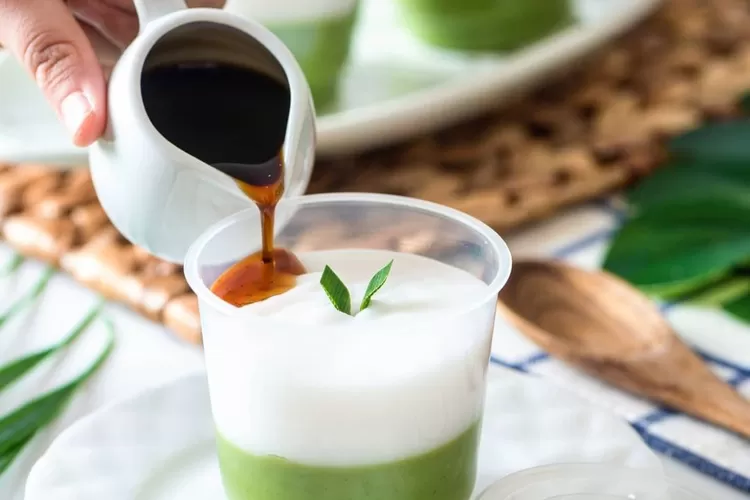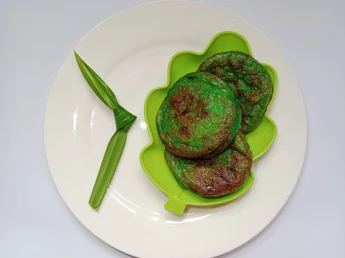Mie Belitung (Belitung Noodles)

Mie Belitung is one of the island’s most famous traditional dishes and a must-try for visitors. This dish features thick yellow noodles served with a rich brownish gravy, offering a sweet and savory taste made from shrimp, spices, and a signature broth.
It is typically complemented with toppings such as boiled potato slices, tofu, cucumber, bean sprouts, crackers, and fried shallots, adding both flavor and texture. The unique blend of sweet, savory, and fresh flavors makes Mie Belitung stand out from noodle dishes in other parts of Indonesia.
Today, Mie Belitung is an iconic culinary experience that can be enjoyed everywhere, from humble street food stalls to local restaurants.
Highlights of Mie Belitung:
- Sweet-savory thick gravy made from shrimp and spices.
- Topped with potato, tofu, cucumber, bean sprouts, crackers, and fried shallots.
- Unique taste you won’t find anywhere else.
- An iconic must-try dish when visiting Belitung.
Gangan

Gangan is a traditional Belitung dish, well-known for its fresh, yellow turmeric-based broth rich in spices. It is usually made with freshly caught seafood, such as grouper or mackerel, cooked together with a blend of turmeric, galangal, chili, and other local spices.
The soup has a savory, slightly spicy, and refreshing taste, with a distinctive tanginess from starfruit (bilimbi), which gives it a unique flavor profile. Gangan is often served as a main dish during family gatherings or to welcome guests.
This dish represents the authentic culinary identity of Belitung — simple, flavorful, and closely connected to the island’s abundant seafood resources.
Highlights of Gangan:
- Refreshing yellow broth made with turmeric and spices.
- Fresh seafood as the main ingredient.
- A unique blend of savory, spicy, and tangy flavors.
- A traditional dish deeply rooted in Belitung’s food culture.
Kue Jungkong (Jungkong Cake)

Kue Jungkong is a traditional sweet from Belitung, well-loved for its soft texture and delightful blend of sweet and savory flavors. It is made from a mixture of rice flour, glutinous rice flour, coconut milk, and palm sugar, then steamed into beautiful layers of brown, green, and white.
Each layer offers a distinct taste: rich sweetness from palm sugar, creamy savoriness from coconut milk, and softness from the rice flour. The colorful presentation makes Kue Jungkong not only delicious but also visually appealing.
This cake is often enjoyed as an afternoon snack or served as a dessert during family gatherings and traditional celebrations in Belitung.
Highlights of Kue Jungkong:
- A unique blend of sweet, savory, and rich flavors.
- Beautiful layered colors: brown, green, and white.
- Soft texture made from rice flour and coconut milk.
- Popular as both a snack and a dessert.
Kue Rintak (Rintak Cake)

Kue Rintak is a traditional dry cookie from Belitung made primarily from sago. It has a crunchy yet slightly crumbly texture, with a distinctive sweet and savory taste. The natural aroma of sago and its traditional preparation method make Kue Rintak an authentic snack deeply rooted in Belitung’s culinary heritage.
Often served as a companion to coffee or tea, especially in the afternoon, Kue Rintak is also popular as a practical souvenir from Belitung, thanks to its long shelf life.
Highlights of Kue Rintak:
- Made from sago with a sweet and savory flavor.
- Crunchy yet crumbly texture.
- Perfect pairing with coffee or tea.
- A long-lasting traditional snack and popular souvenir from Belitung.
Kue Bingke (Bingke Cake)

Kue Bingke is a traditional cake from Belitung, loved for its sweet and slightly savory taste, with a fragrant aroma from coconut milk and eggs. Made from a mixture of flour, coconut milk, sugar, and eggs, the cake is baked until the outer layer turns golden brown and slightly crispy, while the inside remains soft, moist, and rich.
Usually shaped in a round or square form, Kue Bingke looks simple yet is highly appetizing. Its soft texture and delightful flavor make it a favorite snack among the people of Belitung, whether enjoyed daily or served during special occasions.
In addition to being enjoyed on the spot, Kue Bingke is also a popular souvenir from Belitung, thanks to its unique flavor that appeals to many.
Highlights of Kue Bingke:
- Sweet and slightly savory with a fragrant coconut aroma.
- Soft inside with a lightly crispy outer layer.
- Baked for a rich, authentic flavor.
- A traditional Belitung snack and popular souvenir.
Berego

Berego is a traditional dish from Belitung made from a mixture of rice flour and sago flour. The dough is steamed and then rolled, giving it a soft and chewy texture that resembles a flattened rice cake.
It is typically served with fish curry or gangan (Belitung’s signature yellow fish soup), which enhances its savory flavor. The combination of Berego’s chewy texture with the spiced broth offers a simple yet authentic culinary experience.
Often enjoyed as breakfast or an everyday meal, Berego reflects the local tradition of combining staple ingredients with seafood and aromatic spices.
Highlights of Berego:
- Made from rice flour and sago with a soft, chewy texture.
- Commonly served with fish curry or gangan.
- Savory, simple, and authentic flavor.
- A traditional Belitung dish, often eaten for breakfast.
Lakse (laske)

Lakse, also known as Laske, is a traditional Belitung dish similar to Malay laksa. It features rice noodles served with a rich, savory fish curry broth that is thick and full of spices.
The golden-yellow soup is infused with coconut milk and aromatic spices such as turmeric, lemongrass, and galangal. Its taste is savory with a hint of spiciness, perfectly complementing the soft rice noodles.
Lakse is often enjoyed as a main dish, especially during family gatherings or festive occasions. It reflects Malay culinary influence while maintaining Belitung’s unique local flavors.
Highlights of Lakse:
- Rice noodles as the main ingredient.
- Served with a flavorful fish curry broth.
- Savory, slightly spicy, and aromatic with coconut milk.
- A traditional Belitung dish with Malay cultural influence.
